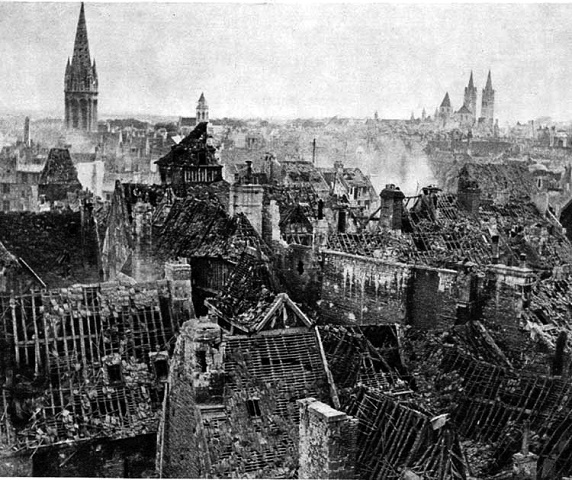The D-Day aftermath is generally overlooked in favor of the Normandy landings themselves, but the battles that followed were just as important a part of history as the landings that preceded them. Many of the deaths in Operation Overlord took place in these skirmishes, and the impact on France in general was quite large. Given the recent anniversary of the landings, it only makes sense to remember the D-Day aftermath as well.
The Second World War was rife with artillery fire, and the battles following the Normandy landings were certainly no exception. Many towns were all but destroyed during Operation Overlord, resulting in some civilian deaths as well as military casualties. One such site of destruction was the city of Caen, which took heavy fire during the D-Day aftermath. The issue was that, while getting onto the beaches was the first obstacle, the Allies still had to move their way inland to free France from German occupation. This was a long and arduous task during which many of those who survived were taken prisoner.
To the Allies, the best-case scenario had them in Paris within a week of storming the beaches. In reality, this would take almost three months of hellish battles. The Allies were simply not prepared for how well-defended the inland cities were, and the D-Day aftermath was not planned for with nearly as much care as the initial landings. There could not be a clear German victory either, as their defenses were not suited to crush the opposition and they were severely lacking in tanks and personnel, the Mail Online reports.
What then followed was a succession of battles in which the Allied forces had to slowly whittle away at the German defenses, with the Germans using every positional advantage that they had at their arsenal. In the D-Day aftermath, a multitude of soldiers were killed in shell attacks, bombings, and tank attacks. Many civilians died as well, as the Allies had to drop bombs during air raids to help clear out the enemy.
The D-Day aftermath was fraught with death, destruction, and a sense of panic as both sides realized that they had not fully planned for what they were getting themselves into. Each side was determined not to pull out, as they knew what retreat would mean for the war effort. Each side was constantly afraid of losing resources and fought tooth and nail to come out on top of every battle as quickly as possible. While the Normandy landings may have been perilous and frightening, the D-Day aftermath is where the true invasion of France took place. Many lost their lives or were willing to sacrifice themselves, and these men have undeniably earned the same respect as those who fought on the beaches on the 6th of June.
